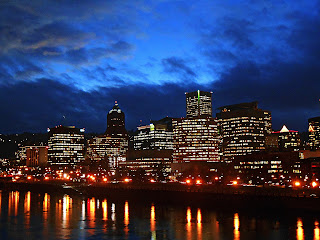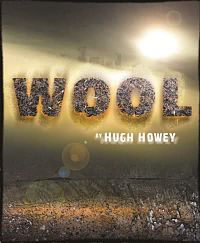It's "Two-for-one Sunday" here at the Sound and Fury dispatch desk.
On Saturday morning, after about a month of picking away at it, I finished reading Yann Martel's novel,
Life of Pi. I had to read the last ~150 pages of the novel in a frenzied 6 hour reading period in order to finish it in anticipation of Date Night with
Madame Cariaga who, it being her turn to choose, wanted to see the eponymous movie. The fruit of this complicated (yet mundane) set of circumstances is this blog post, which reviews both the novel and the movie.
For what it's worth...
Life of Pi, the novel
After everything I'd heard about this novel and all its acclaim I had high hopes.
Sister Paige spoke highly of the book, and it famously won the Man Booker Prize. Even now, 12 years after publication, there is an impossibly long hold list for the book at the Multnomah County Library. I started reading the book before I was even aware that a movie was at that very moment, being edited for release.
Life of Pi is the story of an Indian boy, Piscine
Molitor Patel. Piscine (or "Pi" as he is called) is the son of a zookeeper in Pondicherry, India. He's precocious, wise, and likeable. He's a spirtual seeker.
The first third of the novel describes Pi's spiritual growth. In addition to his indigenous Hinduism, Pi discovers and adopts Christianity and Islam. All of this in spite of the mild consternation of his rational father, the knowing indulgence of his mother, and the taunting of his older brother. As the zookeeper's son, Pi knows much about animals and relates many interesting, but little-known facts about them.
This part of the novel moved slowly. I found Pi's childhood experiences to be mildly entertaining and at times humorous, but not particularly profound. Nor did I find the writing to be compelling. It took me a good long while to get through this part of the novel. By the time I reached the point in the book when Pi's father announces that he is selling the zoo and moving his family to Canada, I was convinced that
Life of Pi was yet another oversold mediocrity
a las Sisters Brothers or
The Art of Racing in the Rain.
Not so!
The second third of the novel is very different. Fourteen-year-old Pi and his family and many of their zoo animals (which have been sold to various North American zoos) embark on a Japanese freighter bound for Canada. But the ship never makes it. As they cross the vast Pacific, an unexplained disaster strikes and the ship sinks, taking with it everyone but Pi, a zebra, an orangutan, and a Bengal tiger named Richard Parker. At that point, the novel becomes a recounting of Pi's 227 day ordeal trapped on a lifeboat with dangerous animals.
One by one, the animals meet their demise until only Pi and Richard Parker remain. As Pi struggles against the elements, he comes to realize that he and Richard Parker need each other to survive. It's a gripping story of survival, of suffering, and of profound spirituality.
But it isn't until the last third of the novel that Martel's genius is revealed. The scene is a Mexican hospital, where Pi is being interviewed by two Japanese officials investigating the disappearance of the ship. As Pi recounts his experiences, readers must reexamine the tale they've just read in light of new possibilities. That is, they must confront the infinitely complex and uncertain nature of truth.
This is a deeply moving and enigmatic novel. Like all the best novels (indeed, like all great works of art)
Life of Pi poses deep, difficult questions without crassly imposing answers on its readers.
A great read, a brilliant novel. Yann Martel is a writer that I look forward to reading further.
Life of Pi, the movie
Having finished the novel that very morning, I went with Maty to the evening showing of Ang Lee's film adaptation.
Ang Lee is a fantastic director. His crown jewels, Brokeback Mountain and Crouching Tiger, Hidden Dragon, are superb. And in his capable hands, Life of Pi, the movie, does a decent job of representing Martel's novel. Decent, but not perfect.
The flick is visually beautiful. Viewers are treated to a panoply of enchanting scenes: a Pacific Ocean so calm and still that Pi and his lifeboat seem to drift in a white void neither sky nor water, constellations of phosphorescent jellyfish, vast landscapes of roiling water. Apparently, Richard Parker, the tiger, is the result of digital wizardry, but you'd never know it while viewing the film. The special effects were dazzling. (Did I mention that this is a 3D movie? You've got to wear those ridiculous glasses. But it's worth it.)
Suraj Sharma did a fine job as castaway Pi, but here's where I took issue with the film. Castaway Pi, as depicted by Sharma, is a young man. But in the book, Pi is a boy. It's a crucial difference. Certain critical events take on much different significance as a result.
Lee also made a difficult decision about how he presented the interview with the Japanese officials. He relied on Pi verbally recounting an alternate version of the story, rather than depicting it as flashback. Far be it from me to second-guess a master like Lee, but I really do think presenting the alternate story visually would have been more effective.
(And, really, Mr. Lee, was the superfluous and underdeveloped romance between Pi and the Indian girl even necessary?)
In the end, Life of Pi, the flick, joins
Cloud Atlas, the flick, as another cinematic adaptation that comes close, but cannot in the end live up to the majesty of the novel it depicts.




















